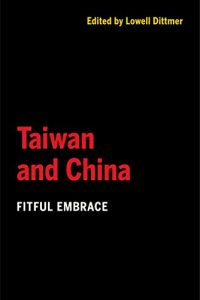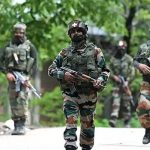
As ever, a good book contextualising the present must present the reader with a brief account of the past. In this light, “Fitful Embrace” highlights the contentious relationship between China and Taiwan from a historical perspective, arguing that flashpoints such as the 1949 civil war, 1995-96 missile crisis, and the election and reelection of Chen Shui-Bian as first Taiwanese President from the DPP, have shaped the highs and lows of cross-strait relations.
The book does well to present the narrative of identity followed in both entities, and how debates on what constitutes a holistic Chinese identity conflict with debates on the differences between socio-political identities propagated in the People’s Republic of China (mainland China), Republic of China (Taiwan), and Hong Kong (Macau). The beliefs of the people, in this regard, matter the most, because those who moved to Taiwan years ago still feel connected to the motherland, and for them, the middle-ground lies in cordial relations with ease of movement. However, as highlighted in the chapter “Mingling but not Merging,” the Taiwanese are increasingly also refusing to give up on their own specific identity.
Because China and Taiwan do not accord sovereign recognition to each other, semi-governmental agencies such as Taiwan’s Straits Exchange Foundation (SEF) and China’s Association for Relations Across the Taiwan Straits (ARATS) maintain bilateral relations through trade and commerce. As argued in the book, these State-Owned Enterprises (SOEs), along with Taiwanese taishang (entrepreneurs) in China, play a crucial role in fulfilling the vacuum left out by political rivalry.
China-Taiwan relations are heavily influenced by the presence of the United States as an exigent factor in the equation. Given the obvious tensions between the US as a predominantly status quo power and China as a revisionist one, Taiwan has become a prop for the bilateral assertion of authority between the two countries. Jin Huang argues in the book that under Hu Jintao and Xi Jinping, China has “boxed Taiwan in,” meaning that they have given Taiwan no way out but to keep discussions on reunification alive, and eventually become one with the motherland. Given the US is a proponent of maintaining the status quo across the strait, and has no formal relations with Taiwan, it can be inferred that in the event of a Chinese offensive, how the US will react remains uncertain.
In the concluding chapter, Dr Dittmer highlights the dilemma created by an ambiguous “One China” consensus by arguing that even if rational deliberations over cross-strait peace and stability are carried out between PRC and ROC, Tsai Ing-Wen’s “brave new” anti-provocation, anti-reunification policy and the solidifying individualism in the Taiwanese identity dull the prospects for reunification. Taiwan’s “three noes” policy (no immediate reunification, no independence and no use of force), is the mainstay for maintaining cordial relations between China and Taiwan, by effectively keeping the status quo intact. Even so, Dr Dittmer rightly argues that the relations shall continue to remain “suspicious” for a long time.
Across over 300 pages, the book provides comprehensive socio-cultural, economic and military perspectives on China-Taiwan cross-strait relations, as well as their individual domestic and international standing. Using quantitative and qualitative analyses to explain narratives of identity, culture and politics in China and Taiwan, the book explains the diverse relations shared by the two entities. It divides chapters into three segments – namely National Identity, Political Economy and Political Strategy. While the divisions themselves do well to systematise the aims and objectives of the book, they fall slightly short in providing a judicious explanation to the chapters under them. Rou-lan Chen’s chapter on Chinese Youth Nationalism, hosted under the National Identity segment, uses the example of “outrage nationalism” over the Senkaku islands dispute to explain how a situation of crisis brought the Chinese youth together among themselves, and with Taiwan. However, the matter in itself does little to cement national identity or spark new debates on the issue. In fact, going by the definition of Chinese nationalism (which invokes a love for the Communist Party more than the country itself), it wouldn’t be a stretch to say that the youth-led outrage directed partly against the CPC is better classified as “anti-national dissent” and not “nationalistic fervour”. At the same time, the state-led propaganda that belittles Japan and the West across youth education projects in Japan is equally about Political Strategy as much as it is about identity.
Chapters of the book have been authored by academics and political experts from China, Taiwan, the US, and even Hong Kong. Because even experts from mainland China weigh in on issues concerning Taiwan, and vice versa, the book provides an inclusive overview of cross-strait relations. The scholars do not, however, address a legal question – “can Taiwan be called a country in international law?” Legal scholars have long debated Taiwanese sovereignty under international law, which is primarily why its claims to territorial integrity are respected but not translated into policy action. When the text was first published in 2017, 21 nations across the world had granted diplomatic recognition to ROC over PRC. Contemporarily, as Chinese influence in regions like the Pacific and the Caribbean has risen, countries like Dominican Republic, Kiribati, and the Solomon Islands have switched recognition from Taiwan to China. At the same time, the Chinese economic spat with Lithuania has encouraged it to recognise Taiwan over PRC. At the outset, Taiwan’s significant disadvantage in terms of diplomatic and legal support makes cross-strait affairs seem like a zero-sum game. However, the historicities of China-Taiwan relations, complemented by their cultural and economic affinities and challenged by their political differences, make matters complex.
The book becomes a must-read to understand the emerging dynamics of peace and security across the Taiwan Strait. On the cover page of its May 2021 edition, the Economic Times magazine called Taiwan the “most dangerous place on Earth,” warning that US and China could go to war over it. This was followed by recent flybys carried out by Chinese warplanes in the Taiwanese ADIZ. Clearly, tensions in cross-strait relations in the backdrop of US-China rivalry have become a matter of global concern, and the book provides a good context to make sense of events in the region. The book also provides fresh perspectives to internal dynamics of PRC, ROC, and PRC-ROC relations, marking a contrast with contemporary works written on the matter, which give undue emphasis on either the economic interdependence between China and Taiwan or the role of the US in the relations, missing out on the historical and cultural developments that bind the two together – or push them apart. However, the book can be complemented by works like Steven M. Goldstein’s “China and Taiwan” (2015) and George T. Crane’s “China and Taiwan: Not yet ‘Greater China’” (1993). As a keen student of International Relations and East Asian geopolitics, I recommend “Fitful Embrace” to all fellow students of international history and geopolitics, as well as to academia teaching East Asia in general and China and Taiwan in specific. The book is also intended for researchers conducting fresh quantitative and qualitative analyses on the present and future of cross-strait relations.













